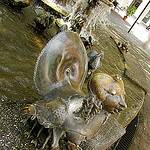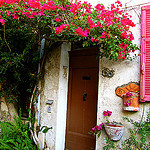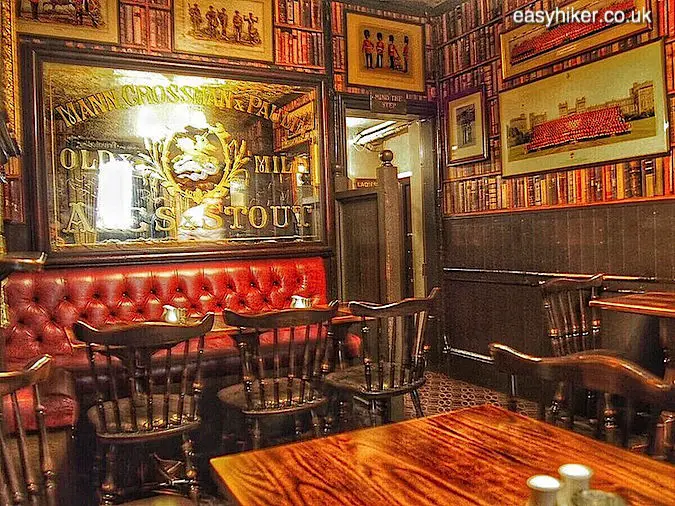Limoges is in possession of not one but two town centres. This does not make the capital of the Limousin province (located about half way between Paris and Bordeaux) unique as such, but its two richly storied ancient quarters, unlike most of the other town centre twins, are not conjoined. Centuries later, they still resemble two islands of historical significance in a grey soup of urban matter.
Ah, you will think, I get it: one must have been under the thumb of the local feudal warlord, the other run by an institution of the church.
Wrong! The “Quartier Historique du Chateau” was ruled by an abbot, the “Quartier Historique de la Cité” by the local bishop. Which only goes to show that the Middle Ages were more complicated than the likes of you and I can even imagine.

Both town centres, separated by little more than 100 metres, have preserved their different characters to this very day. But again: conversely to what you might expect, the former abbey – the home of pious and self-sufficient monks – has become the busy modern town centre, while the more worldly Bishop’s seat had to settle for the role of the quiet-and-handsome-but-perhaps-a-little-dull brother.
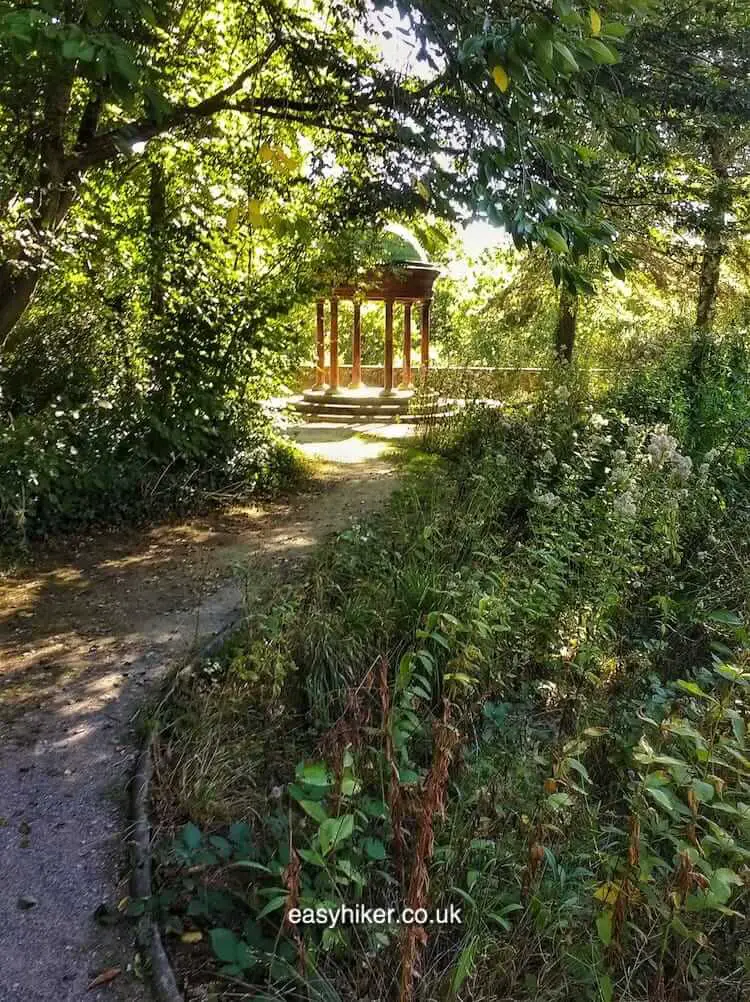
The Cité may be a still water but it runs deep: the old Cathedral gardens invite you to take a quiet stroll which doubles up as a stroll through the history of the town and the diocese.
Just like the church in whose shadow they stand, these gardens reflect centuries of changing tastes, and you can find winding paths through a picturesque “re-wilded” scenery, sometimes accentuated by 19th century garden ornaments, as well as traces of the formal landscaping fashions of the high Baroque.
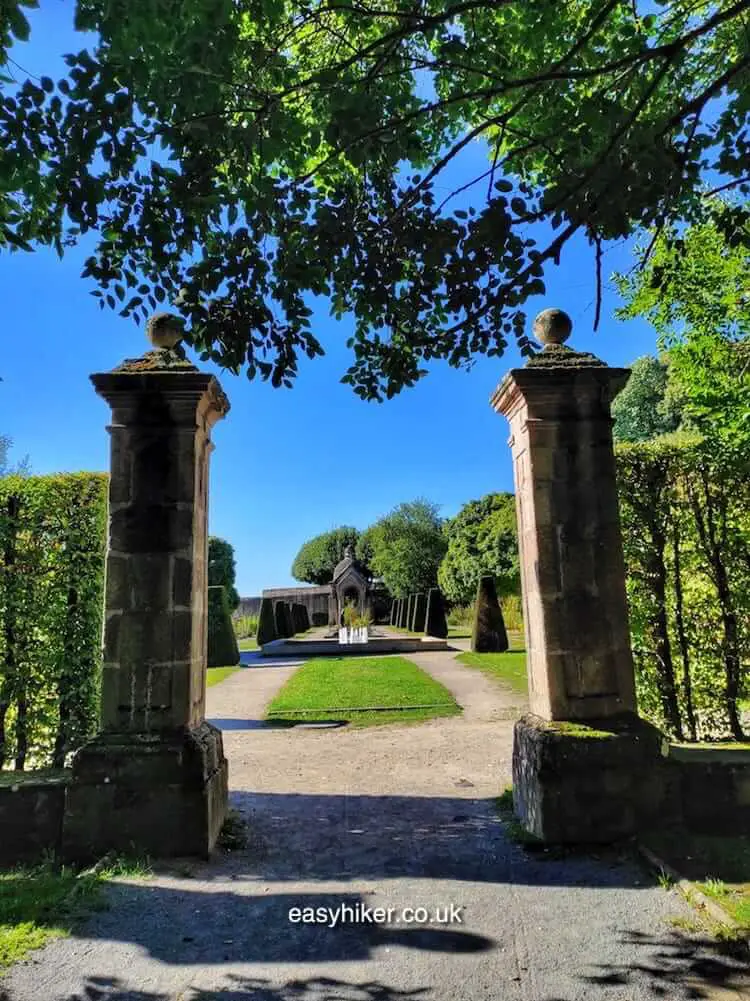
Once you have completed your exploration of the Cathedral district, you can extend the walk by descending down the slope to the near-by river.
Cross the medieval Pont St Etienne …
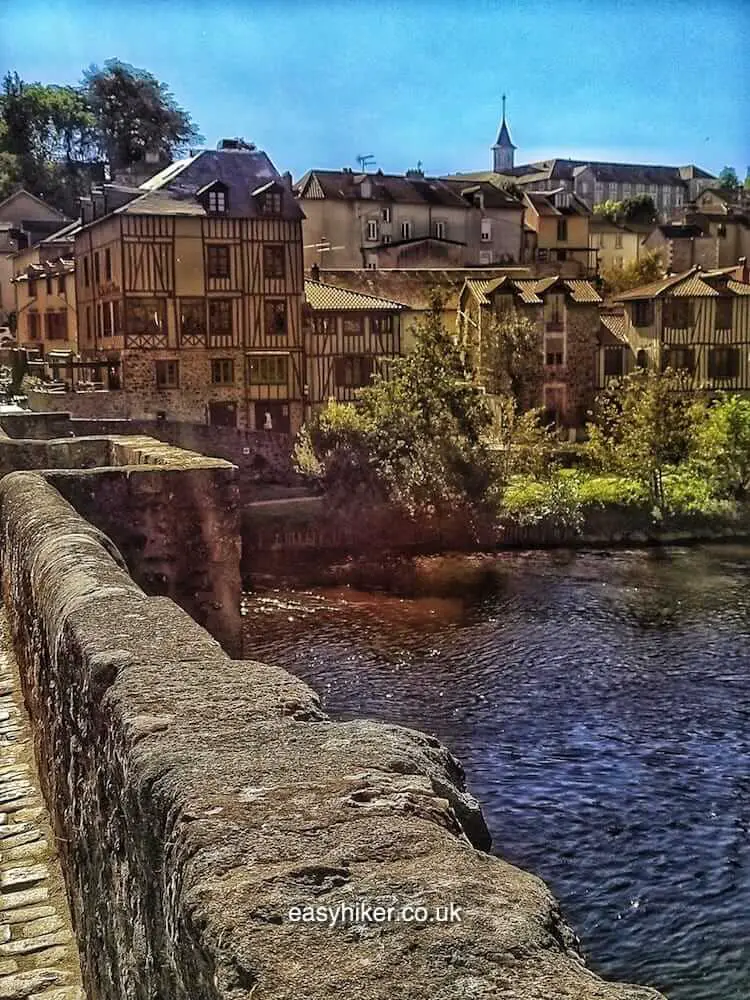
… and continue alongside it for a scenic stroll on the banks of the Vienne.
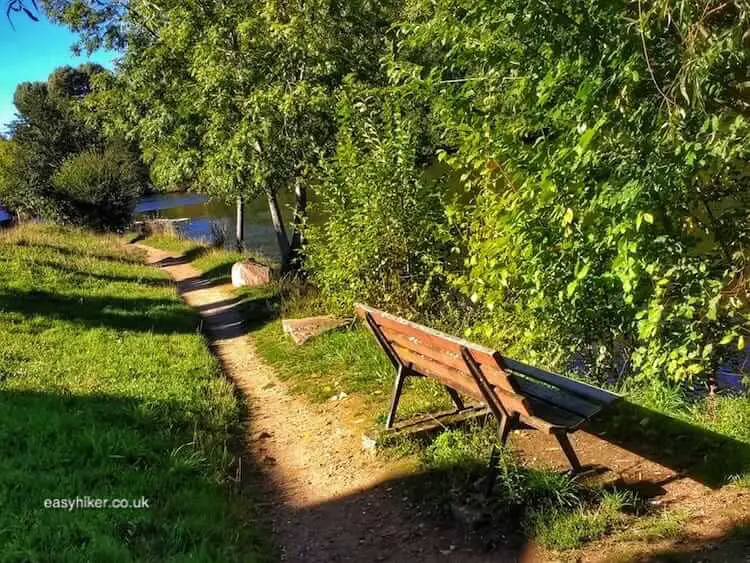
Climb up to the top of the Pont Neuf and cross over into the Quartier du Chateau, the part of town in which the local aristocrats resided, although the castle of the Viscomtes de Limoges no longer exists. It was razed during the French Revolution, a fate it incidentally shared with the abbey, which had been its bitter rival for so many years.
The abbey once stood in the spot, which is today occupied by the Place de la Republique, while the chateau was built about 100 metres away on the modern Place de la Motte, now the home of the town’s covered market.
The castle may have disappeared, but its presence is conjured up by the trompe l’oeil mural on the far side of the square that combines a view of the ancient palace with nods to other features of the city’s history – such as the great fire of 1123, the national and international triumphs of the local basketball team in the 1990s and the birth of the painter Auguste Renoir in 1841.

Plans for the mural, now one the town’s most celebrated attractions, almost had to be abandoned at the eleventh hour. When the owner of the downstairs jewelry shop, also a co-owner of the house, found out that the blueprint for the painting included the depiction of a naked woman (the model in Renoir’s atelier), she withdrew her consent at the last moment – and only changed her mind after she was assured that the model would wear some garment draped around her naked shoulders.
The muralists did as promised, of course – but the painting on Renoir’s chisel, which had never been mentioned and was therefore not covered by the agreement, still shows a naked woman. (The great artist was apparently blessed not only with his genius but also with X-ray eyes.)
Around the corner from the Place de la Motte, you will find the chateau district’s most lively and colourful streets, lined with fancy bars and restaurants …
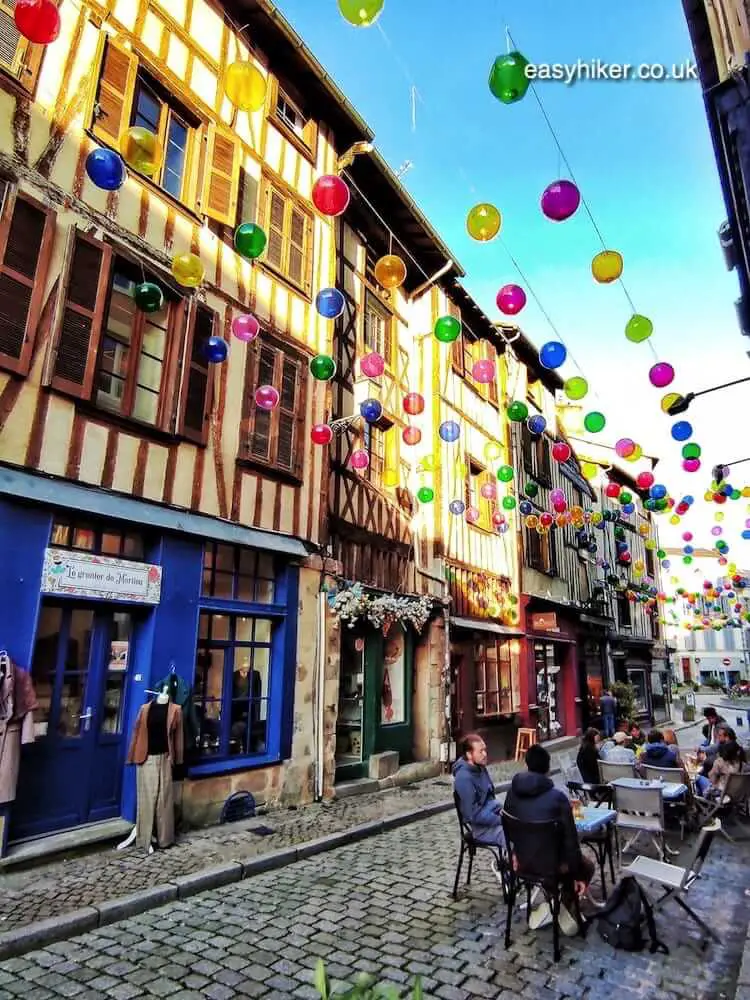
… and featuring what is perhaps the town’s most beautiful building, the Chapel of St Aurelien.
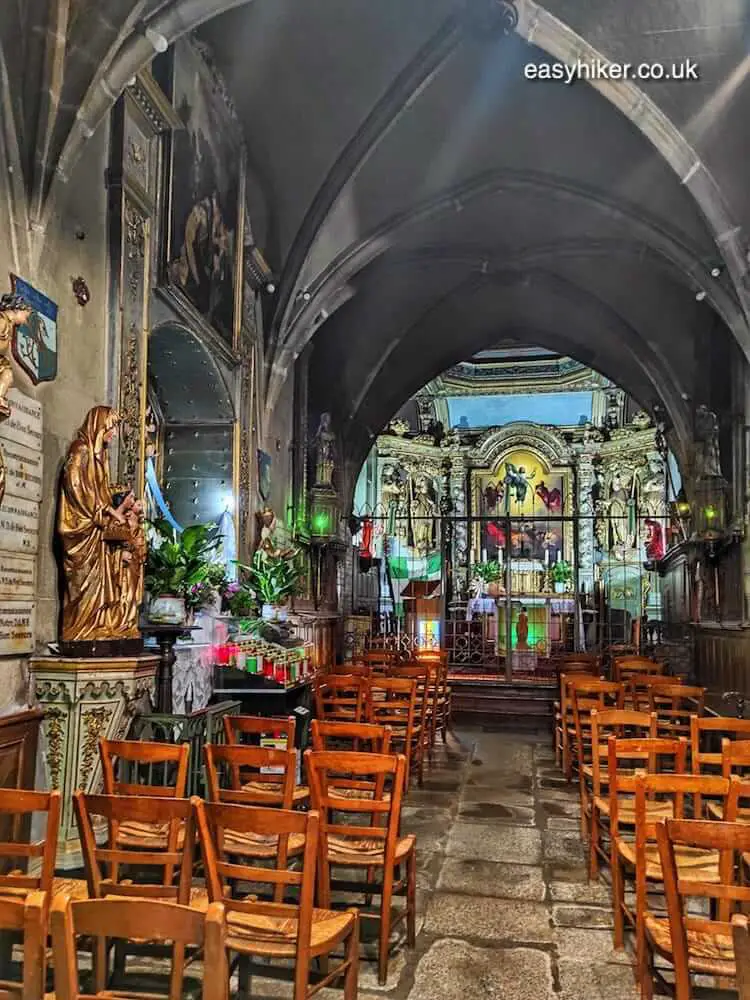
The chapel has been much renovated since it was constructed in the late Middle Ages, and little of the interior decoration has kept its original shape, but the Croix de Limoges stone sculpture in front of the building is from the 14th century. It was originally made for a near-by Carmelite monastery and is therefore even older than the chapel itself.
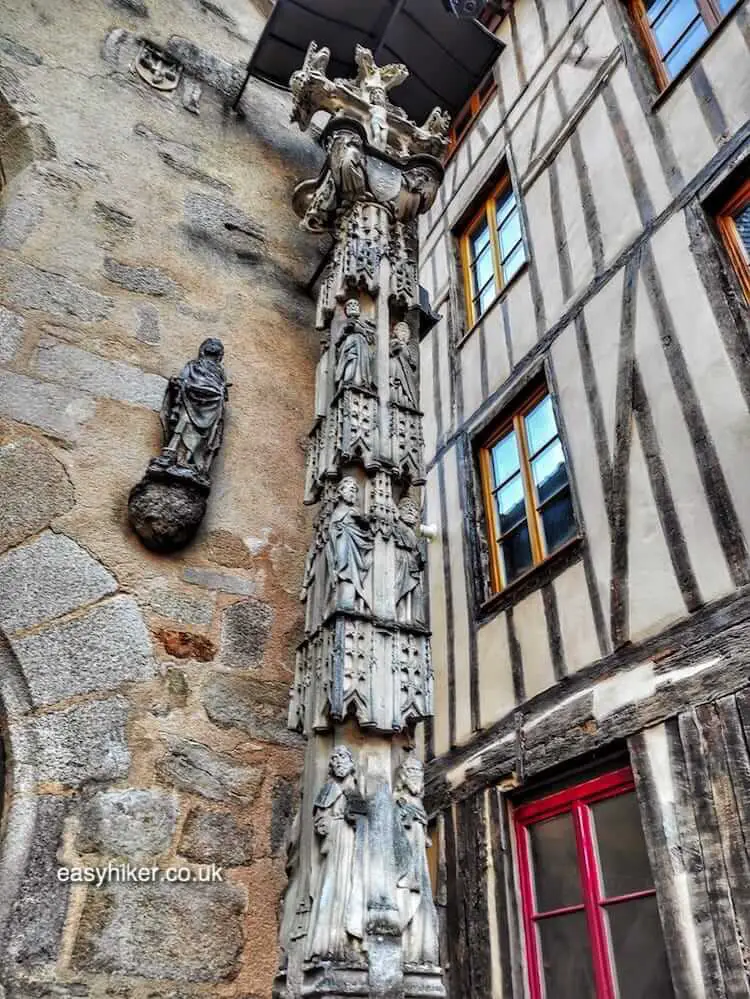
St Aurelien is the patron saint of butchers, and the construction of the chapel was sponsored by the Butcher’s Guild, which later also purchased the building from the abbey in the times of the French Revolution (when the market for Christian artefacts of all kinds must have been at is most bearish).
For centuries, butchery was the main trade of the city – Limoges: the Chicago of medieval France – because the Limousin province was France’s centre for the rearing of cattle.
The Rue de la Boucherie is the main street of the old town, and in past centuries, butchers would have plied their trade in the narrow alleyways between there and the open-air beef market on the Place de la Barreyrrette.
The “barriers” which gave the square its name refer to the fences surrounding the enclosures of the live animals many of who were not destined to survive the market day for long.

The Boucherie quarter may be the town’s most lively district, but, in its calm side streets, its is also its most scenic.

Cattle carried the name of the city and its province around the world, but this was not primarily the cattle that was slaughtered in town but the cattle that was bred and then exported: bulls and oxen of the Limousin breed were known for their physical strength and, for centuries, mainly used to draw ploughs and farmyard vehicles.
The connection between Limoges and an even more famous linguistic legacy – the limousine, originally a special type of chauffeur-driven vehicle – is far less clear. In fact, nobody knows how the limousine acquired its name and what the connection between car and province may be. Your guess is literally as good as anybody’s.
The modern city of Limoges, meanwhile, is more than the sum of its two town centres. One of its most spectacular buildings stands in the modern part of town, but you will not have to walk very far to admire it, provided you come by rail.
The Limoges Benedictines train station may look Victorian – Second Empire or Belle Epoque in France – but was in fact built in the early 1930s and heavily criticized at the time, due to its scale and its (seemingly) indiscriminate borrowing from ancient and exotic styles.
But no matter what you may think looking at the “Minaret of Limoges” (as one critic called it) from the outside: the view from the inside out is sheer bliss, thanks to Francis Chigot’s stained glass windows. No mixing of influences has occurred here: this is pure early-20th-century European modernity.
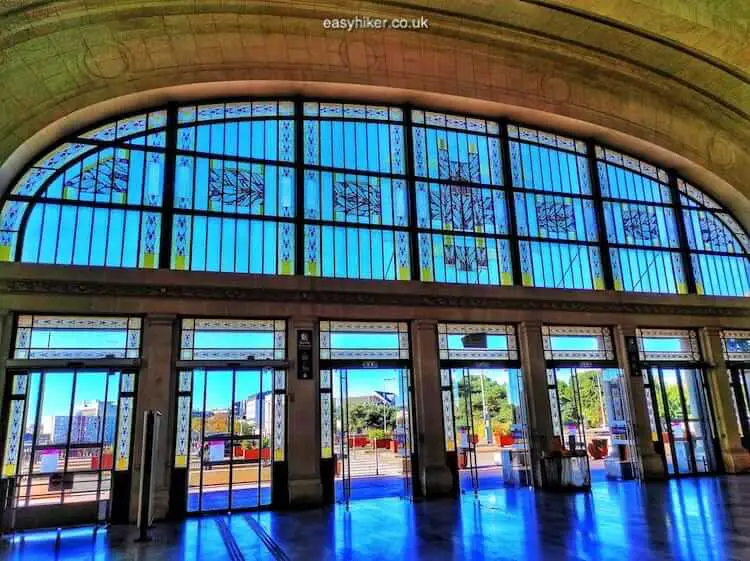
It’s a great overture to your exploration of this fascinating city – and an equally great last image to keep in mind.


